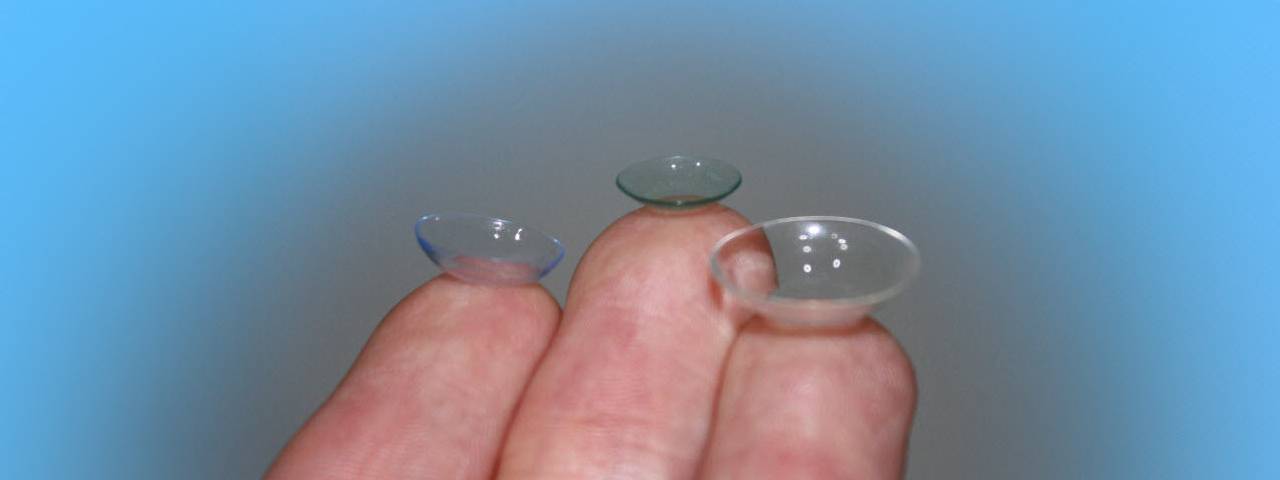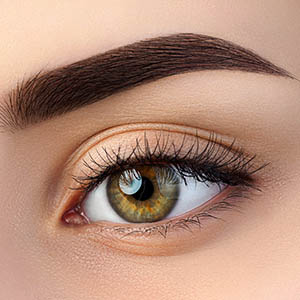
When Gas Permeable Lenses Fail, Scleral Lenses Can Help
When it comes to contact lenses, most people are familiar with soft lenses to help give them a clear vision for nearsightedness (myopia), farsightedness (hyperopia), or astigmatism. In some cases, Gas Permeable (GP) or Rigid Gas Permeable (RGP) lenses are recommended. In other cases, they’re less efficient for long-lasting wear.
When this happens, scleral lenses can be a better option. At Blacksburg Eye Associates, we help patients from the Blacksburg, Virginia area enjoy exceptional vision with scleral lenses.
Knowing the advantages and disadvantages is important and can make a big difference in comfortable – and superior – vision.
 What Are Gas Permeable Contact Lenses?
What Are Gas Permeable Contact Lenses?
Gas permeable contacts are lenses which are made from hard plastic materials. They’re called ‘permeable’ because they allow oxygen to pass through and reach the front of your eye for a more breathable feel.
Unlike soft lenses, GP lenses don’t contain any water. Because of this, many patients find that their GP contacts dehydrate less often. They’re also more durable because the firm materials make it hard for the lenses to tear.
The Advantages Of Gas Permeable Contact Lenses
Gas permeable lenses give our patients some great benefits. In addition to giving you good vision correction for common vision problems, they also offer:
Breathability
More oxygen means that air can reach the cornea, letting your eye “breathe”. This gives you better comfort for all-day wear.
Affordability
GP lenses are tailor-made for each patient. Although there is an initial higher cost, over time, they’re actually more cost effective since you won’t need to replace them often. Similar to a custom-designed outfit, GP lenses may be priced higher at first, but they provide greater long-term value.
Reduced Likelihood Of Attracting Bacteria
Since they don’t hold water, gas permeable lenses are less likely to have bacteria and harmful buildup. This makes them more hygienic and a healthier choice for your eyes.
However, gas permeable lenses may not be for everyone.
The Disadvantages Of Gas Permeable Contact Lenses
While gas permeable lenses offer benefits to patients with vision correction needs, there are some disadvantages you should know about.
It Takes Time To Get Used To Them
Patients who are used to soft contacts find that it takes a while to get used to GP lenses. That’s because of something called ‘lens awareness’. When you blink, you can feel the edge of the lens in your eye. Lens awareness doesn’t hurt or cause discomfort, but patients report feeling something odd in their eye or sensing a sudden physical reminder that the lens is there.
They Move Around Your Eye
Gas permeable lenses are known to slip off the center of your eye. This usually lasts for mere seconds, but when it happens multiple times throughout the day, it can become irritating very quickly.
Tiny Particles Can Get Underneath
You know that feeling when something is stuck in your eye? This can happen with GP lenses. Tiny pieces of debris can get lodged underneath the lenses, causing pain or discomfort.
If you’ve tried gas permeable lenses and have had any of these experiences, or you’re simply looking for something more comfortable for all-day wear, it’s time to try scleral lenses.
 How Long Do Gas Permeable Contact Lenses Last?
How Long Do Gas Permeable Contact Lenses Last?
Assuming that your prescription doesn’t change, gas permeable contact lenses typically last up to 1 year. Scleral lenses usually last for up to 3 years, but as with all types of contact lenses, make sure you use the lens case, contact solution, and any other materials as instructed by your eye doctor. This will make sure you enjoy continued clear, comfortable vision and make your lenses last longer.
Can You Sleep With Gas Permeable Contact Lenses?
Not surprisingly, according to Dr. Colleen Mitchell, it is ill advised to do so. Wearing contacts overnight prevents oxygen from entering the cornea and can increase the risk of developing corneal infections or ulcers. Always take them out before going to sleep, clean and store them safely.
Can You Sleep With Scleral Lenses?
In most cases, it isn’t recommended. Only sleep in scleral lenses if specifically instructed to by your doctor.
Why Do My Gas Permeable Contacts Get Cloudy?
When gas permeable contacts become cloudy, it’s usually due to tiny particles of dirt or debris that get stuck inside or around the lens. This can also be caused by protein buildup, which can usually be cleaned off, but if that doesn’t work, it may be the quality of GP lenses themselves.
Scleral lenses rarely become cloudy, unless due to a phenomenon called “midday fogging”. This is when tiny debris cause the lenses to fog up. If this should happen, simply remove the lenses and gently rinse them with artificial tears. This usually resolves the issue quickly. You can always contact our office for help, too.
Are Scleral Lenses Better Than Gas Permeable Lenses?
Some patients with misshapen corneas find that scleral lenses give them clear vision for longer periods of time. This happens because of their ability to cover a larger area of the eye without touching the cornea directly. In fact, a recent study from the London South Bank University confirmed that scleral lenses were particularly effective in treating eye diseases due to irregularly shaped corneas.
How Much Do Gas Permeable Contacts Cost?
The cost of gas permeable lenses depends on each patient’s condition and prescription needs. For example, if your eye doctor recommends disposable bifocal contact lenses, an estimated per-box cost for these lenses is $50 to $70 (similar to the cost of disposable toric contacts). GP lenses usually average around $200 a pair.
Scleral lenses are custom-made for each patient. This is because every patient’s cornea has a unique shape, so each scleral lens must fit the eye exactly. Because of this personalized fit, the cost of scleral lenses is usually higher than standard contact lenses, which are mass produced. However, sclerals last up to 3 years, so they’re more cost-effective in the long term.
If you have a corneal disease, your insurance coverage may pay for scleral lenses. For specific insurance questions, contact Blacksburg Eye Associates.

Most People Prefer Scleral Lenses Over Gas Permeable Lenses
Like gas permeable lenses, scleral lenses are also made from rigid materials, but that’s where the similarities end. Scleral lenses are specially-designed contact lenses with 2 unique features: a large diameter and a tiny, built-in reservoir of water.
Scleral lenses have a larger diameter than traditional lenses, giving them the ability to rest over the entire area of the sclera (the white part of your eye), but without directly touching the cornea. They also contain a tiny pool of artificial tears, which is built in to the lens. This constantly lubricates your eyes for superior comfort all day long.
Speak with Dr. Colleen Mitchell to see if you’re a candidate for scleral lenses.
So if you have dry eyes, keratoconus, or other corneal conditions and your GP lenses aren’t cutting it, or you’re ready for an upgrade of comfort and long-term value, it’s time to try scleral lenses. Schedule a consultation with Dr. Colleen Mitchell today.
